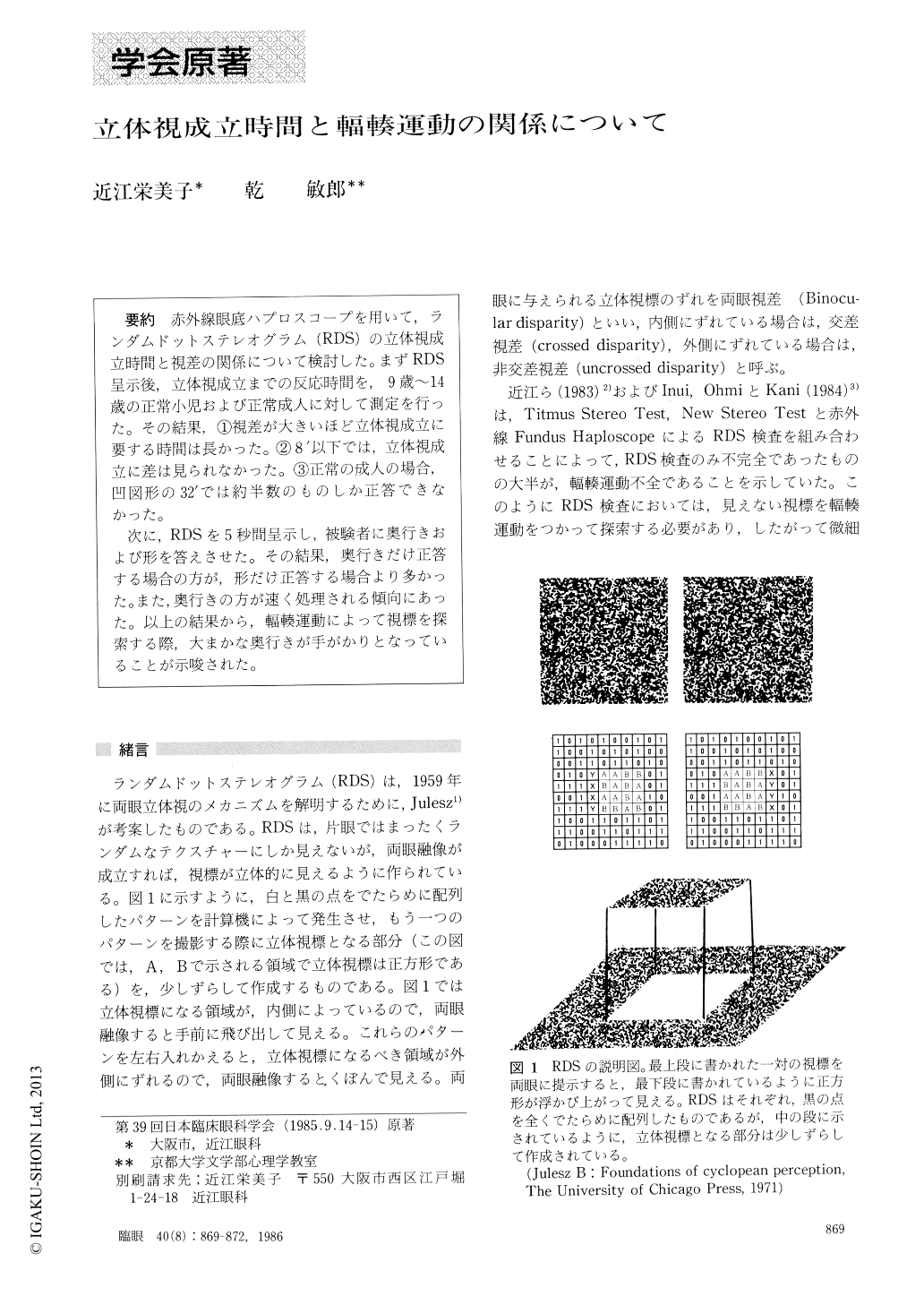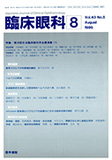Japanese
English
- 有料閲覧
- Abstract 文献概要
- 1ページ目 Look Inside
赤外線眼底ハプロスコープを用いて,ランダムドットステレオグラム(RDS)の立体視成立時間と視差の関係について検討した.まずRDS呈示後,立体視成立までの反応時間を,9歳〜14歳の正常小児および正常成人に対して測定を行った.その結果,①視差が大きいほど立体視成立に要する時間は長かった.②8'以下では,立体視成立に差は見られなかった.③正常の成人の場合,凹図形の32'では約半数のものしか正答できなかった.
次に,RDSを5秒間呈示し,被験者に奥行きおよび形を答えさせた.その結果,奥行きだけ正答する場合の方が,形だけ正答する場合より多かった.また,奥行きの方が速く処理される傾向にあった.以上の結果から,輻輳運動によって視標を探索する際,大まかな奥行きが手がかりとなっていることが示唆された.
We measured the stereopsis perception time (SPT) in 19 normal children and 9 normal adults. A pair of random-dot stereogram (RDS) was presented on the display of an infrared fundus haploscope so as to keep the point of fixation in its center. Subjects were required to tell the figure of the target and its depth (concave or convex) as soon as possible. When the disparity in depth was small, the SPT was constant. The SPT increased when the disparity was larger than 16'.
We then examined whether the depth and shape of RDS was processed simulataneously or not. A group of 19 normal children were tested as to the reaction time for shape and depth respectively. Another group of 22 normal children were required to tell the shape and depth of the target when the RDS was presented for 5 seconds. The results of these experiments suggested that the depth perception was processed faster than shape perception. The present findings are consistent with the theory by Marr and Poggio in 1979 that the final convergence angle is determined from cues about routh depth and shape informations.
Rinsho Ganka (Jpn J Clin Ophthalmol) 40(8) : 869-872, 1986

Copyright © 1986, Igaku-Shoin Ltd. All rights reserved.


